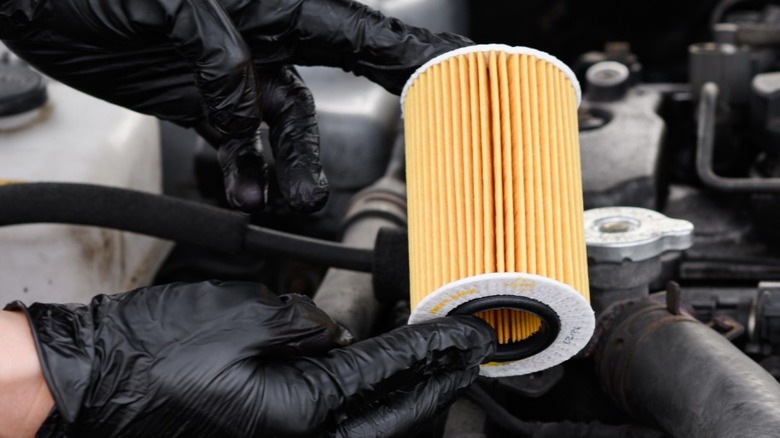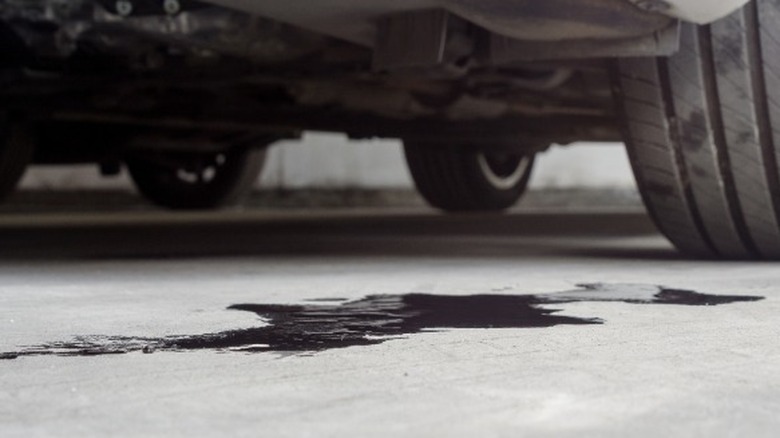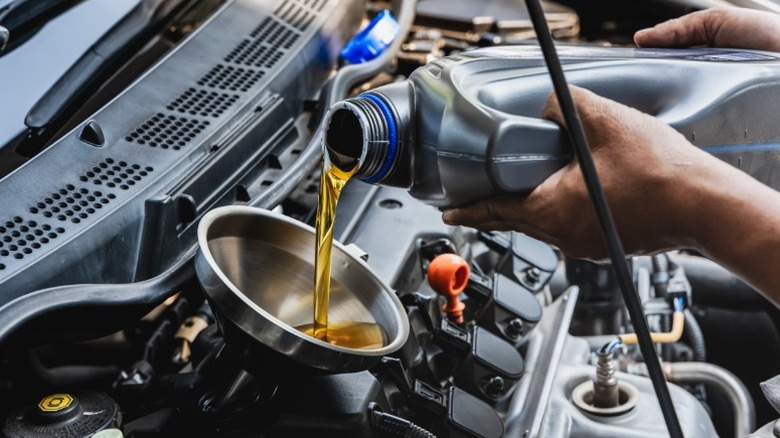
This one is for the newbies. Don't be embarrassed — changing your own oil for the first time is a big moment! It's more than just maintenance, it's pretty much a rite of passage, and learning to do it yourself might save you a little money. You've gathered your tools, maybe a fancy jug of long-lasting synthetic oil, and you're ready to get a little greasy and a lot proud.
But like anything worth doing, there's a learning curve. One of the easiest mistakes to make, especially as a beginner, is grabbing
the wrong size oil filter. Installing the wrong one, even if it seems to screw on okay at first, can lead to more than a little oil on the driveway, even if there are no immediate obvious red flags. The wrong fit can mess with your oil pressure, cause slow leaks, and even do real damage to your engine over time. With choosing oil filters, it turns out "close enough" isn't enough.
Read more: These Are The Best Tires For Your Car, Truck Or SUV, According To Consumer Reports
Why You Don't Want A Filter Fit Fail

When you install the wrong size oil filter, problems might not show up right away, but they could be brewing beneath the surface. If the gasket doesn't seat properly because the fit is slightly off, you might see a small drip start under your car once the engine heats up and pressure builds. That little puddle could be your only warning sign before oil loss begins to starve your engine like slowly bleeding out.
Even if there's no visible leak, the wrong filter can mess with your oil pressure. Filters are designed to handle specific flow rates and pressures; a filter that's too small might restrict oil flow, while a larger one with different internal specs could trigger low-pressure warnings or fail to filter effectively. If the filter's specs don't match your engine's needs, unfiltered oil can make its way through the engine, circulating grit and debris where it shouldn't be. Over time, that can lead to increased wear and reduced performance.
The Simplest Way To Choose The Right Filter

Fortunately, avoiding the wrong filter is easy — just use a fitment guide. This is not an approprate time for guessing. Most parts websites will let you enter your car's make, model, and year to pull up only parts built for your specific engine. If you need to, swallow your pride and ask someone at the parts store to help you do the same thing within their system. From there, it's a good idea to double-check the part number on the filter box against your owner's manual or manufacturer recommendations. Filters might look similar, but relying on appearance alone is a trap.
Once you're certain you've got the right filter, look for these affirming signs when you're installing it: It should thread on smoothly, without resistance or wobble, and the rubber gasket should make clean, even contact with the mounting surface. Once the gasket seats, you should be able to snug it down by hand, usually about three-quarters to a full turn.
Learning to change your own oil is a big step, and getting the little things right, like using the correct filter, makes all the difference. If you're just getting into working on your own car, take the extra minute to double-check the fit. That kind of attention to detail is what turns a novice weekend wrencher into someone who really knows their way around a garage.
Want more like this? Join the Jalopnik newsletter to get the latest auto news sent straight to your inbox...
Read the original article on Jalopnik.











